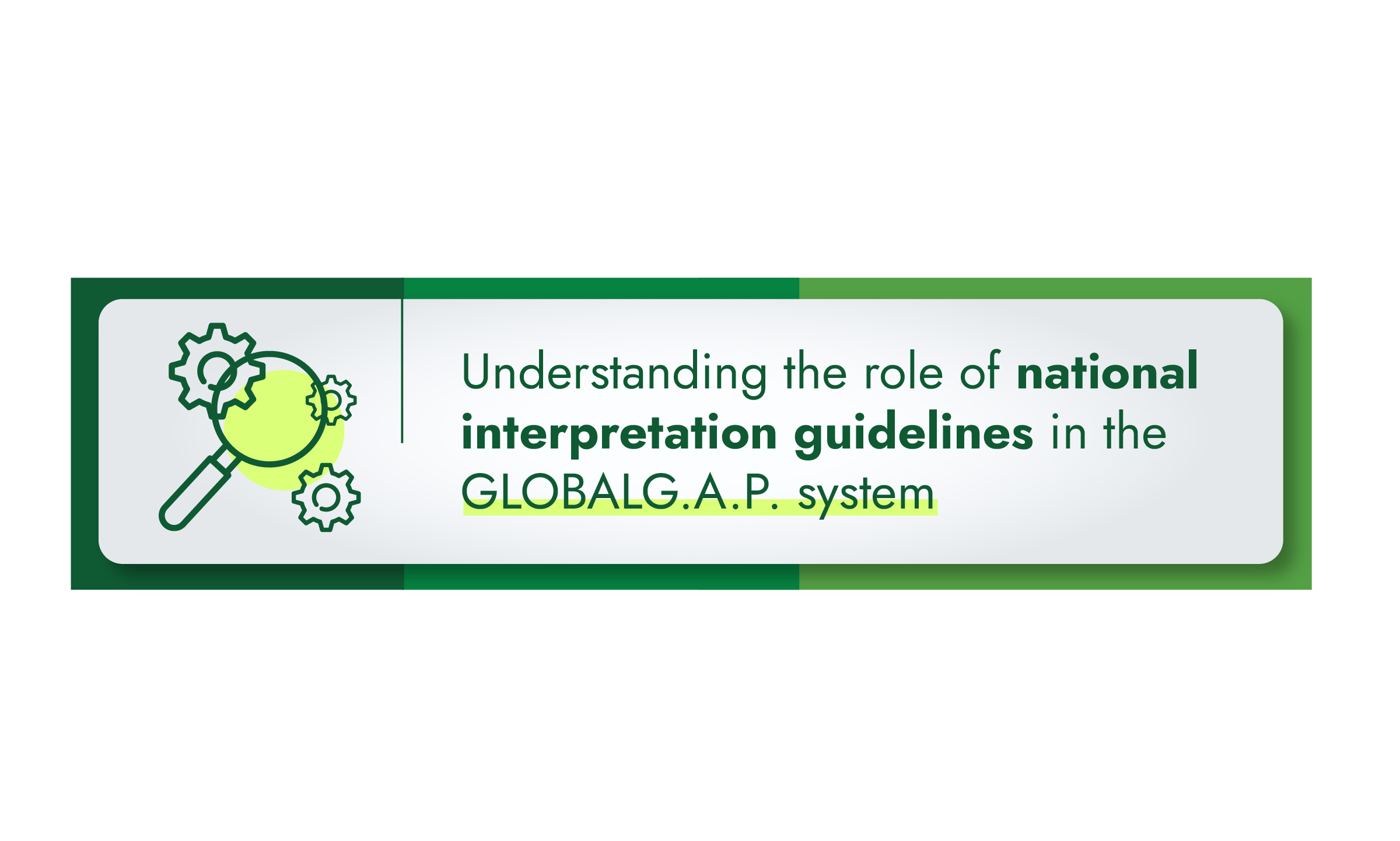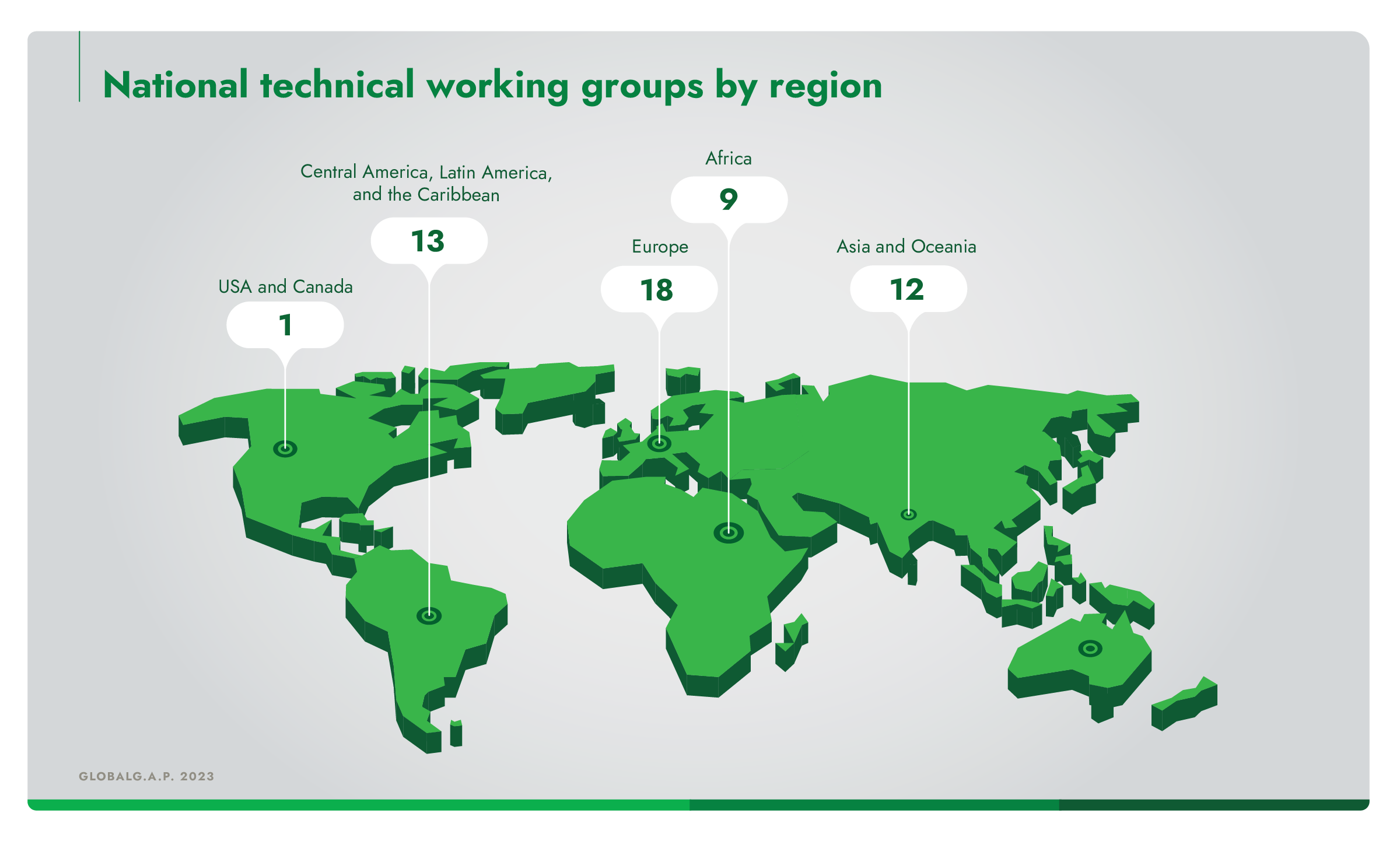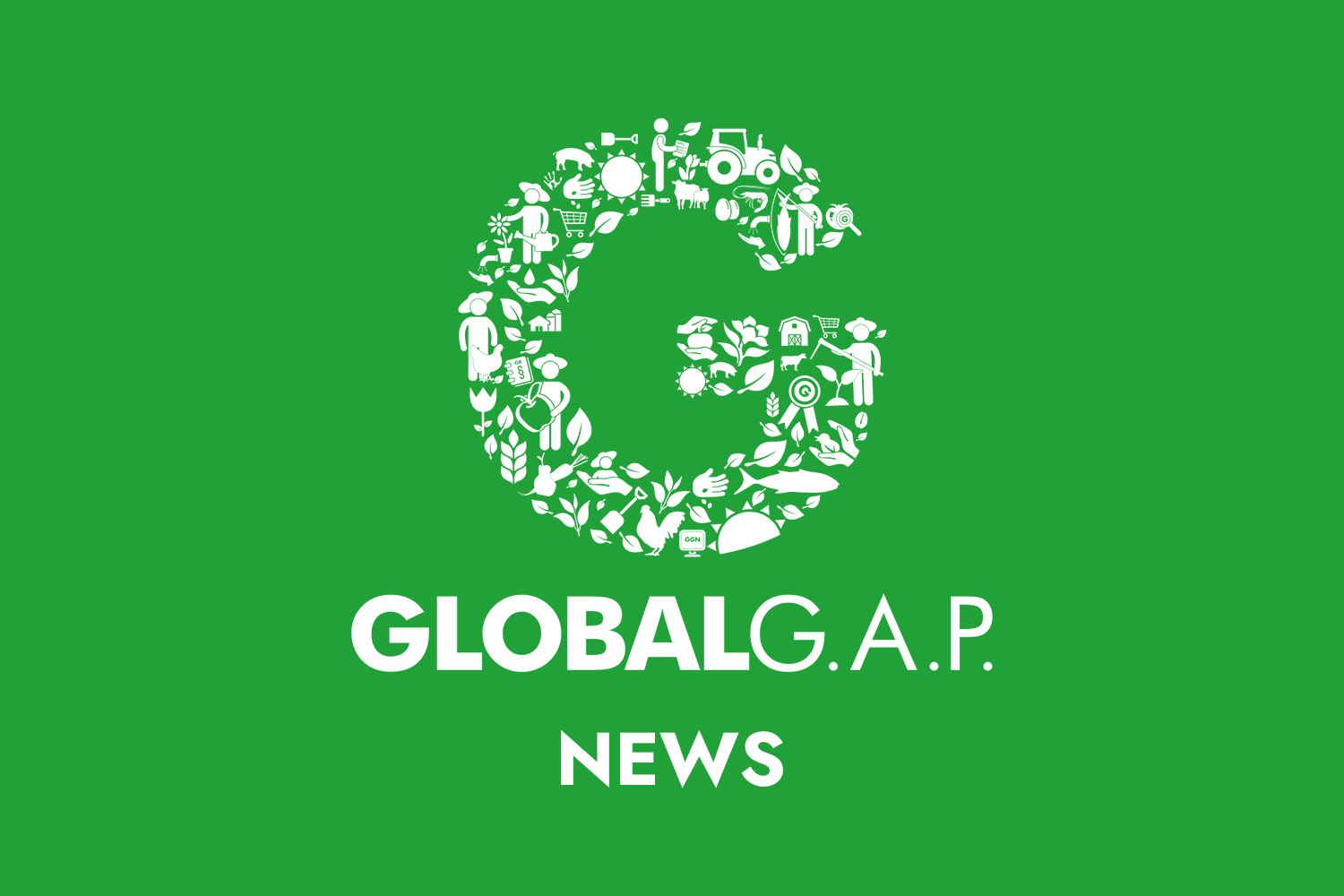27 November 2024
Understanding the role of national interpretation guidelines in the GLOBALG.A.P. system
How are global agricultural standards applied at a local level? Discover how GLOBALG.A.P.'s national interpretation guidelines empower producers worldwide by aligning global standards with local regulations and realities – making implementation simpler and more effective.

Understanding the role of national interpretation guidelines in the GLOBALG.A.P. system
How national interpretation guidelines enable local application of global standards
For global standards to succeed, they must account for local laws, practices, and conditions in the country where they are applied. GLOBALG.A.P. achieves this balance through its national interpretation guidelines (NIGs), which tailor global standards to the specific legal and structural contexts of each country.
By clarifying how universal requirements align with national regulations, NIGs make it easier for producers to implement GLOBALG.A.P. standards effectively and for auditors to assess compliance accurately.
This local adaptation ensures that the core principles of GLOBALG.A.P. standards are upheld globally while remaining relevant and practical at a national level.
The role of national technical working groups
National technical working groups (NTWGs) are the groups responsible for developing NIGs. Currently active in more than 50 countries, NTWGs consist of GLOBALG.A.P. Community Members, qualified experts, and relevant stakeholders from the value chain in a specific country. Participants may include representatives of producer organizations, certification bodies, retailers, supply chain members, and more.
Together, NTWG members work to identify adaptation and implementation challenges based on local legislation or structural conditions, then collaborate to create a specific guideline for their country.

What is included in a national interpretation guideline?
As country-specific adaptations of a GLOBALG.A.P. standard, NIGs include translations into the local language and incorporate relevant national legislation to complement the principles and criteria (P&Cs) listed in the standard or add-on checklist. However, they do not alter the principles behind the standards; instead, they clarify how these criteria should be applied in a specific country through the inclusions of additional documentation or requirements based on national legislation.
For example, IFA for fruit and vegetables details the principle that “Laboratory testing occurs in a manner consistent with industry requirements.” The NIG for India expands on this principle by detailing that “Labs used shall be ISO 17025 accredited from NABL, India. However, if the Lab has been accredited by any accreditation body for ISO 17025 who is a signatory to IAF, the lab reports shall be accepted.”
Where there is no need for local interpretation, the original GLOBALG.A.P. criteria remain valid. This balance preserves the integrity of the standards while ensuring they are compatible with the various regulatory frameworks in place worldwide.
Once published, NIGs are mandatory for audits in the relevant country. Producers have three months from publication to adjust their processes in line with the new guideline, after which certification bodies (CBs) must apply the NIGs during audits.
This adaptation helps producers comply with both GLOBALG.A.P. requirements and local laws, supporting more accurate audits and cost-effective compliance for responsible farming practices.
The NIG development process: Five key steps
Creating a NIG is a collaborative, structured process that includes the following steps:
Development and submission: NTWGs download a standardized NIG template, complete it, and submit it to GLOBALG.A.P., which checks the submission for accuracy.
Technical review: The NTWG and GLOBALG.A.P. technical experts collaborate to resolve any issues through a series of reviews, with responses required within set timeframes to keep the process efficient.
Peer review: The draft NIG is shared with stakeholders, including certification bodies and GLOBALG.A.P. Community Members, for feedback.
Technical committee approval: After peer review, the finalized NIG is submitted to the relevant GLOBALG.A.P. technical committee for approval.
Publication: The NIG is published on the GLOBALG.A.P. website and integrated into the IT systems, becoming mandatory for certification in the respective country.
This rigorous process ensures that each NIG meets a sufficient level of clarity, effectiveness, and compliance with national requirements.
GRASP national interpretation guidelines: Harmonizing social responsibility
For the GLOBALG.A.P. Risk Assessment on Social Practice (GRASP), NIGs play a particularly vital role. Since country-specific labor laws, such as minimum wage and working hours, are highly variable, GRASP NIGs can ensure that worker protections align with the strictest applicable requirements: Where local laws provide greater worker protection than GRASP’s requirements, they take precedence; otherwise, GRASP’s minimum standards apply.
Recently published national interpretation guidelines
The list of available NIGs continues to expand, with NIGs for the GRASP v2 add-on published in November for the following countries: Albania, Bosnia and Herzegovina, Bulgaria, Burkina Faso, Canada, China, Guatemala, Guinea-Bissau, Israel, Lithuania, Madagascar, Serbia, the Slovak Republic, Slovenia, Ukraine, the United Kingdom, the USA, Poland, Japan, Italy, India, Hungary, France, Egypt, Ecuador, and Chile.
Useful links
For more details on these new NIGs, please visit the GLOBALG.A.P. document center and filter for “national interpretation guidelines” under document type.
To explore the full list of NTWGs and information on joining a group, visit our NTWG webpage. If you are interested in GLOBALG.A.P. Community Membership, arrange a call back to discuss your options.
